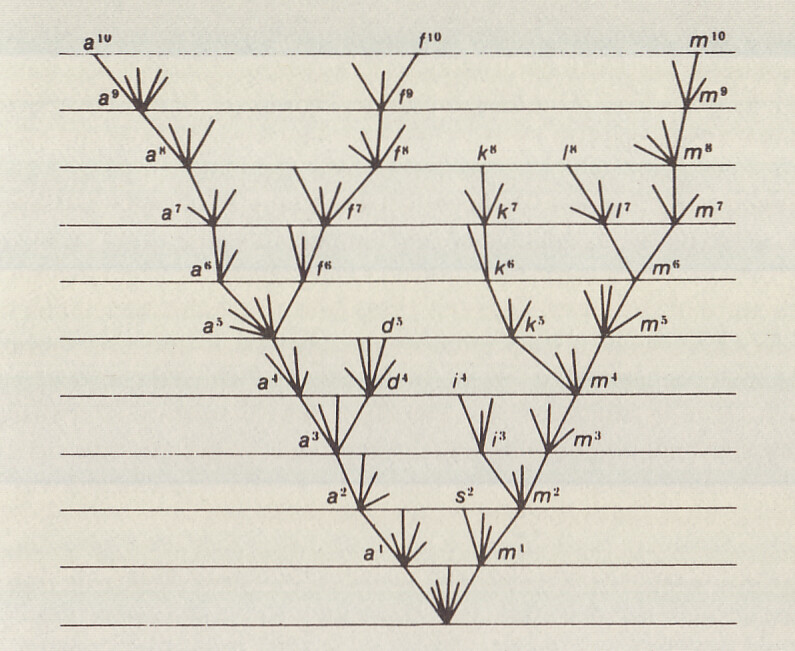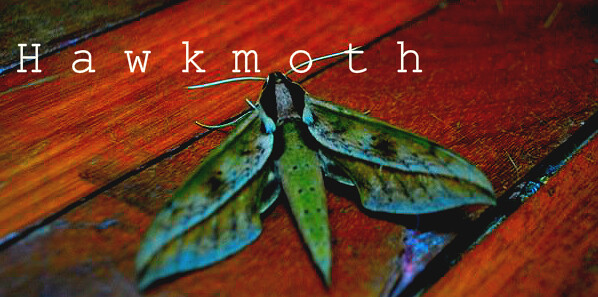
A bit of a long post, but bear with me. Looking at this image, the only figure in Darwin's Origin of Species, I wonder what he would think of biology today. Lately, I've been scrounging for science in popular media. The stories making headlines often draw conclusions well beyond the implications of the data (recent jelly blooms come to mind). It seems that we favor the sensationalized, the sexy, and the concrete over the decidedly uncertain, slow and often inconclusive reality of research. People like a good story, but discovery is rarely born of a singular "eureka!" moment. In the spirit of natural science as popular discourse, I thought I'd write something on Darwin's big idea: Evolution by natural selection.
In its most essential nature, evolution involves genes. This is because genotype determines phenotype: an individual’s physical characteristics. Genetic variation is manifested as phenotypic variation- physical diversity among members of a population. Both random change in the form of mutation, and nonrandom response to the environment via natural selection contribute to the maintenance of this diversity. This is the process of evolution.
How does genotypic variation arise in the first place? Mutations, random changes in the nucleotide sequence of the genetic code, “are the ultimate source of genetic variation” (Freeman and Herron 143). Normally DNA is transcribed into RNA, which is translated into protein. The central dogma of molecular biology, this is how genes determine observable characteristics (phenotype). In the process of replicating the DNA, in transcription of DNA to RNA, or in translation of RNA to protein mutations may arise. These changes in the blueprint of a protein lead to a novel product. That product may or may not be functional. Regardless of its outcome, a mutation is a chance change in the sequence of the genetic code (Freeman and Herron 146). Generating mutation is the main role of chance in evolution; random changes in the hereditary code cause unpredictable variation in proteins, and therefore in the phenotypes expressed in a population.
Although mutation is a random process, natural selection is not. Some phenotypes are advantageous to inherit, and some are not. As a result, there is differential survival of individuals within a population. Some are simply better equipped for survival in their environment than others. These individuals are more likely to survive and reproduce, contributing to a relatively higher concentration of their genes in the next generation.
For example, consider a population of schooling fish with silver scales. In a large school, each fish remains relatively anonymous to a predator- just one flash in a massive silver cloud. Now a mutation occurs in the gamete of one fish, changing the nucleotide sequence encoding pigmentation in fish scales from silver to red. Some offspring are born silver, and a few are born red. In this case, inheriting the red phenotype would not be advantageous. Red individuals would be readily visible in a silver school, and would likely be picked off by predators before reaching maturity. As a result, the gene for red scales would not be passed to the next generation, because it would not be advantageous in this environment.
Clearly there was no predetermined goal in the generation of red scale pigment. A random mutation encoded a new phenotype. Since this phenotype was unfavorable for the fish that inherited it, they did not survive to reproduce. Therefore the red pigment gene was not passed to the next generation. Natural selection is the process giving direction to chance, favoring one phenotype over another. It leads to disproportionate survivorship in a given population, and changing gene frequencies from generation to generation.
Evolution is neither random, nor is it predetermined. It is simply a process of perturbation and response, leading to change in a population over time. Both random mutation and nonrandom natural selection are necessary. Evolution could not exist without both facets. Elegant, and fundamental, this is the process of life.
For further reading, please see: Freeman S., Herron J.C. Evolutionary Analysis.Upper Saddle River, NJ: Pearson Education, Inc., 2007.

No comments :
Post a Comment